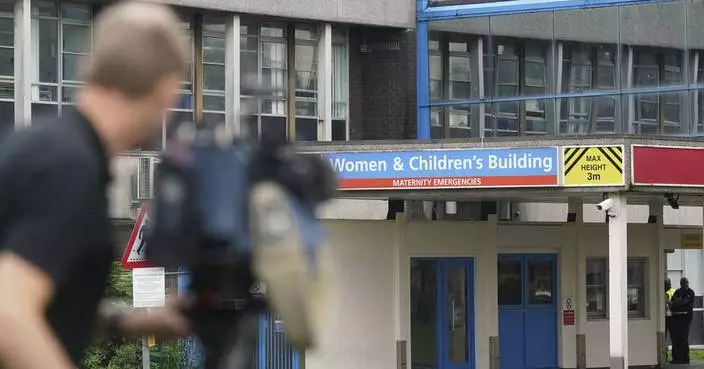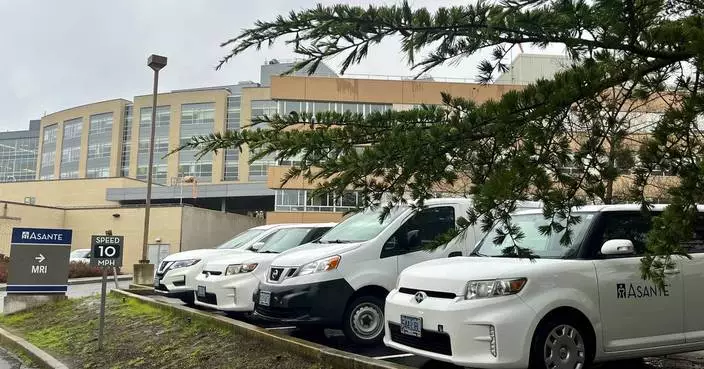Hong Kong Children's Hospital has been treating a five-year-old girl suffering from thalassaemia, a genetic blood disorder that causes the body to have less haemoglobin than normal.
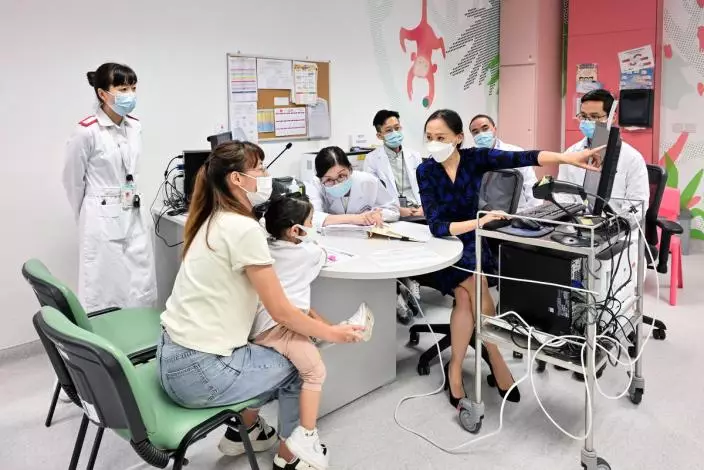
One-stop service: The children’s hospital provides one-stop multidisciplinary medical treatment to patients through collaboration among relevant doctors, nurses, and allied health professionals. Source: news.gov.hk
The clinical team had planned to perform a haematopoietic stem cell transplant for the patient.
Click to Gallery
Hong Kong Children's Hospital has been treating a five-year-old girl suffering from thalassaemia, a genetic blood disorder that causes the body to have less haemoglobin than normal.
The clinical team had planned to perform a haematopoietic stem cell transplant for the patient.
“We have to ensure it is safe and up to standard and is medically safe to be used in our patients in need.
“Secondly, hygiene is observed to make sure no germs and no bacteria can contaminate the stem cell unit.”
The hospital’s Department of Clinical Genetics Chief of Service Dr Luk Ho-ming said the newborn screening programme is quite unique in the children’s hospital.
Saving lives
During the process, it was noted that one of her relatives had a haematopoietic stem cell unit stored in a cord blood bank in Guangzhou.
As such, the clinical team communicated and collaborated with the cord blood bank to actualise the transfer of the stem cell unit. With the support of various Mainland authorities and units, the stem cell unit was successfully transported from the Mainland to Hong Kong.
Hong Kong Children’s Hospital Service Head (Haematology & Oncology) Dr Frankie Cheng said putting the patient's treatment as a top priority, and in accordance with the established mechanism, the stem cell unit arrived at the hospital as planned.
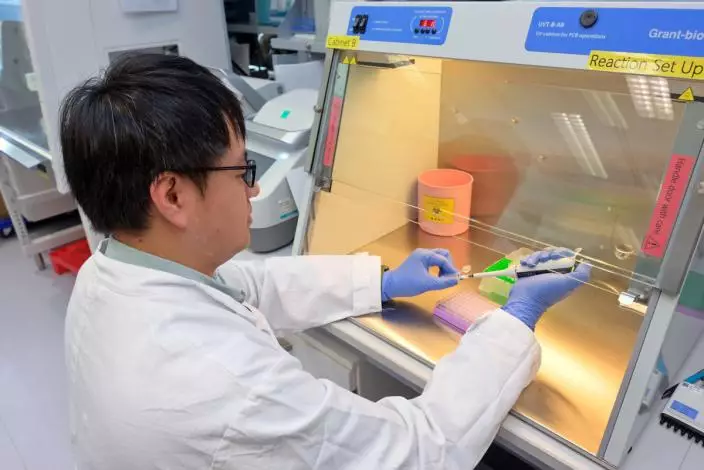
Advanced facility: The children’s hospital now provides 26 inborn errors of metabolism and severe combined immune deficiency testing, together with the spinal muscular atrophy screening programme for all babies born in public hospitals. Source: news.gov.hk
“We have to ensure it is safe and up to standard and is medically safe to be used in our patients in need.
“We have to keep the stem cell unit at a very low temperature and observe strict hygiene measures to make sure the cord blood stem cell unit is not being contaminated by bacteria or dirt that will affect or even be harmful to the patient.”
Hong Kong Children's Hospital is the only centre in the city to perform haematopoietic stem cell transplants for children. About 40 to 50 transplants are performed each year.
The hospital will carry out the transplant surgery, which is expected to take place in October, based on the treatment plan and the girl's clinical condition.
High standards
Dr Cheng pointed out that the stem cell unit is currently stored in the hospital’s stem cell transplant laboratory. He added that the medical team believes October is a suitable period for the transplant, which requires excellence when it comes to collecting and storing stem cells.
“After the transferral of the cord blood stem cell unit to our stem cell laboratory, we follow all the standard procedures to make sure the stem cell unit being stored is up to standard.
“The stem cells need to be stored in a very, very low temperature in order to maintain the number of cells, which is very important for the successful transplant later.

Patient-focused care: Dr Frankie Cheng says the stem cell unit arrived at the hospital as planned after it was successfully transported from the Mainland - a prime example of how the hospital ensures the treatment of patients is its top priority. Source: news.gov.hk
“Secondly, hygiene is observed to make sure no germs and no bacteria can contaminate the stem cell unit.”
Newborn screening
Hong Kong Children's Hospital is also the major referral centre for uncommon disorders in the city.
To address uncommon and complex conditions, the hospital introduces advanced technology and provides multiple accurate tests to detect the underlying causes of diseases in patients and assist in developing effective treatment plans.
In addition, the hospital supports the city-wide newborn screening programme, which covers all babies born in public hospitals, ensuring newborns receive timely treatment when a problem is detected.

Comprehensive screening: Dr Luk Ho-ming says the hospital supports the city-wide newborn screening programme, which covers all babies born in public hospitals, for the sake of early detection. Source: news.gov.hk
The hospital’s Department of Clinical Genetics Chief of Service Dr Luk Ho-ming said the newborn screening programme is quite unique in the children’s hospital.
“We currently provide 26 inborn errors of metabolism and severe combined immune deficiency testing, together with the spinal muscular atrophy screening programme for all the babies born in public hospitals.
“The ultimate aim of the newborn screening is for the early detection and early treatment, hopefully that we can alleviate the mortality of that severe condition for our newborn baby.”
Comprehensive approach
At the same time, the children’s hospital provides one-stop multidisciplinary medical treatment to patients through collaboration among relevant doctors, nurses, and allied health professionals.
Patients and their families can meet the clinical team in a single visit, which helps to save their time for travelling. It can also provide an optimal platform for multiple experts to communicate and determine the best and most personalised treatment plan for each patient.
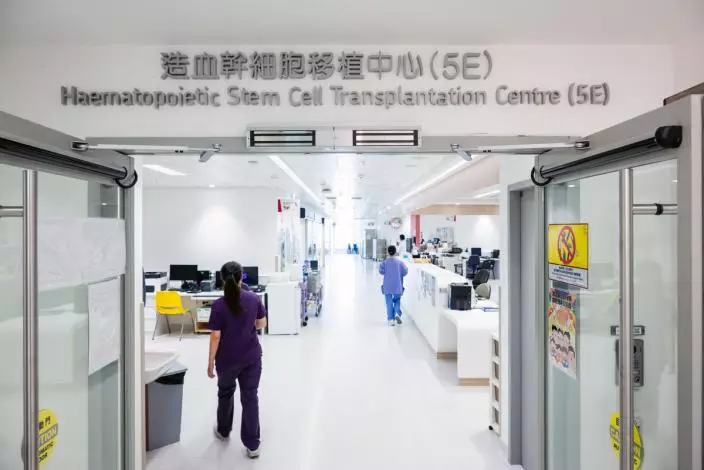
Saving lives: Hong Kong Children’s Hospital, which is treating a five-year-old girl suffering from thalassaemia, plans to perform a haematopoietic stem cell transplant for the patient in October. Source: news.gov.hk
DEIR AL-BALAH, Gaza Strip (AP) — Israeli airstrikes across Gaza overnight and Wednesday hit a U.N. school sheltering displaced Palestinian families as well as two homes, killing at least 34 people, including 19 women and children, hospital officials said. A U.N. official said six staffers were among the dead.
The war in Gaza is now into its 11th month, with tens of thousands of people dead, and international efforts to mediate a cease-fire between Israel and the Hamas militant group have repeatedly stalled as they accuse each other of making additional and unacceptable demands.
In the occupied West Bank, Israeli troops launched raids in several towns backed by airstrikes, continuing a crackdown across the territory that the military says is targeting militants but has wrecked neighborhoods and killed civilians. One airstrike killed five people the military said were militants threatening its troops. A second strike on a car killed at least three people, the Palestinian Health Ministry said.
An attacker crashed a fuel truck into a West Bank bus stop near the Israeli settlement of GIvat Assaf, killing an Israeli soldier, the military said. Officials said soldiers and an armed civilian “neutralized” the attacker.
The strike on the U.N.’s al-Jaouni Preparatory Boys School in the Nuseirat refugee camp killed at least 14, including two children and a woman, officials from Awda and al-Aqsa Martyrs hospitals said. At least 18 other people were wounded, they said.
The Israeli military said it was targeting Hamas militants planning attacks from inside the school. The claim could not be independently confirmed.
One of the children killed was the daughter of Momin Selmi, a member of Gaza’s civil defense agency, which rescues wounded and retrieves bodies after strikes, the agency said.
Gaza's schools are packed with tens of thousands of Palestinians driven from their homes by Israeli offensives and evacuation orders. The al-Jaouni school, one of many in Gaza run by the U.N. agency for Palestinians, or UNWRA, has been hit by multiple strikes during the war.
UNRWA said six staffers aiding the displaced, including the manager of the shelter, were killed. “Humanitarian staff, premises & operations have been blatantly & unabatedly disregarded since the beginning of the war,” the agency's director, Philippe Lazzarini, wrote on X.
Israel frequently bombs schools, saying they are being used by Hamas militants. It blames Hamas for civilian casualties from its strikes, saying its fighters base themselves and operate within dense residential neighborhoods.
More than 90% of Gaza’s school buildings have been severely or partially damaged in strikes, and more than half the schools housing displaced people have been hit, according to a survey in July by the Education Cluster, a collection of aid groups led by UNICEF and Save the Children.
Israel’s offensive in Gaza has killed at least 41,084 Palestinians and wounded another 95,029, the territory’s Health Ministry said. The ministry's count does not differentiate between civilians and militants. Israel launched its campaign vowing to destroy Hamas after the Oct. 7 attack on southern Israel in which militants killed some 1,200 people and abducted 250 others.
Earlier Wednesday, a strike hit a home near the southern Gaza city of Khan Younis, killing 11 people, including six brothers and sisters ranging from 21 months to 21 years old, according to the European Hospital, which received the casualties.
A strike late Tuesday on a home in the urban Jabaliya refugee camp in northern Gaza killed nine people, including six women and children, according to the Health Ministry and the civil defense. The civil defense said the home belonged to Akram al-Najjar, a professor at the al-Quds Open University, who survived.
The Israeli military said two soldiers died and seven were injured when their helicopter crashed in southern Gaza as they evacuated wounded troops. It said the overnight crash was not the result of enemy fire and is under investigation. There have been 340 Israeli soldiers killed since the ground operation began in Gaza in late October, at least 50 of whom died in accidents, according to the military.
The West Bank also has seen a surge in violence. Israel has stepped up its military raids there, saying it is working to dismantle militant groups and prevent increasing militant attacks on Israelis. Palestinians say such operations are aimed at cementing Israel’s seemingly open-ended military rule over the territory. At the same time, Jewish settlers have accelerated attacks on Palestinians.
The military on Wednesday said it launched assaults around the West Bank town of Tulkarem and in two northern towns. It said it dismantled an explosives lab, a weapons manufacturing workshop and an explosives-rigged vehicle. The military said an airstrike backing troops operating in the town of Tubas killed five militants. The Palestinian Health Ministry confirmed five were killed but did not specify if they were militants or civilians.
The Red Crescent said three people were killed in a strike on a car in a village outside Tulkarem. The military confirmed it carried out a strike there but had no immediate details.
Follow AP’s war coverage at https://apnews.com/hub/israel-hamas-war

An Israeli tank overlooks the Gaza Strip, as seen from southern Israel, Wednesday, Sept. 11, 2024. (AP Photo/Tsafrir Abayov)
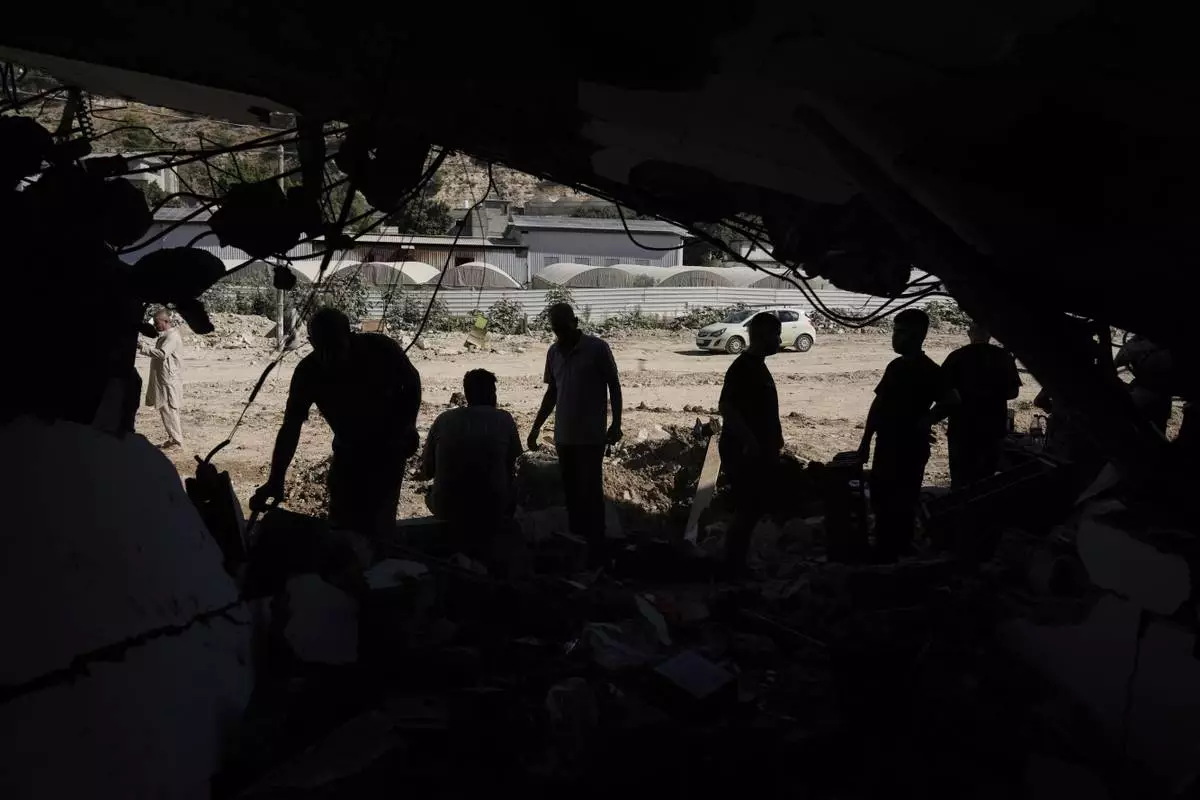
People inspect the destruction following an Israeli forces raid in Tulkarem, West Bank, on Wednesday, Sept. 11, 2024. (AP Photo/Majdi Mohammed)
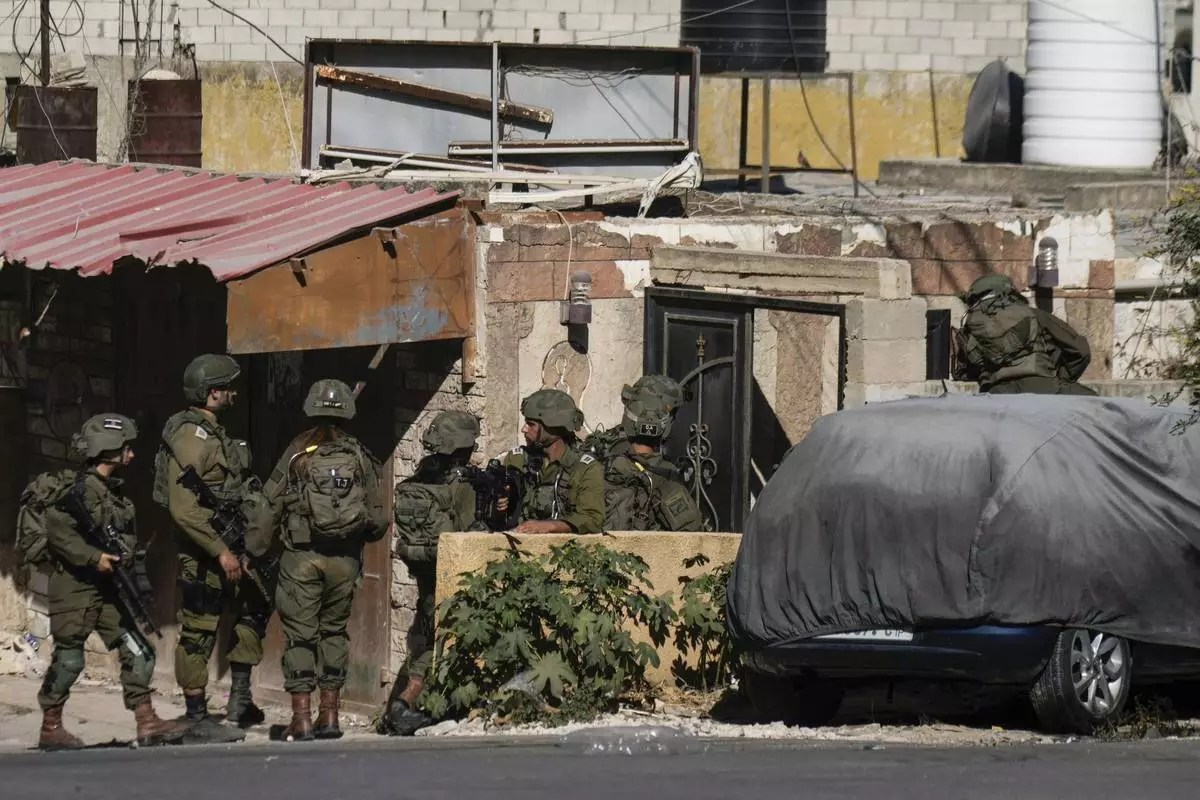
Israeli soldiers are seen during an army raid in Tubas, West Bank, on Wednesday, Sept. 11, 2024. (AP Photo/Majdi Mohammed)
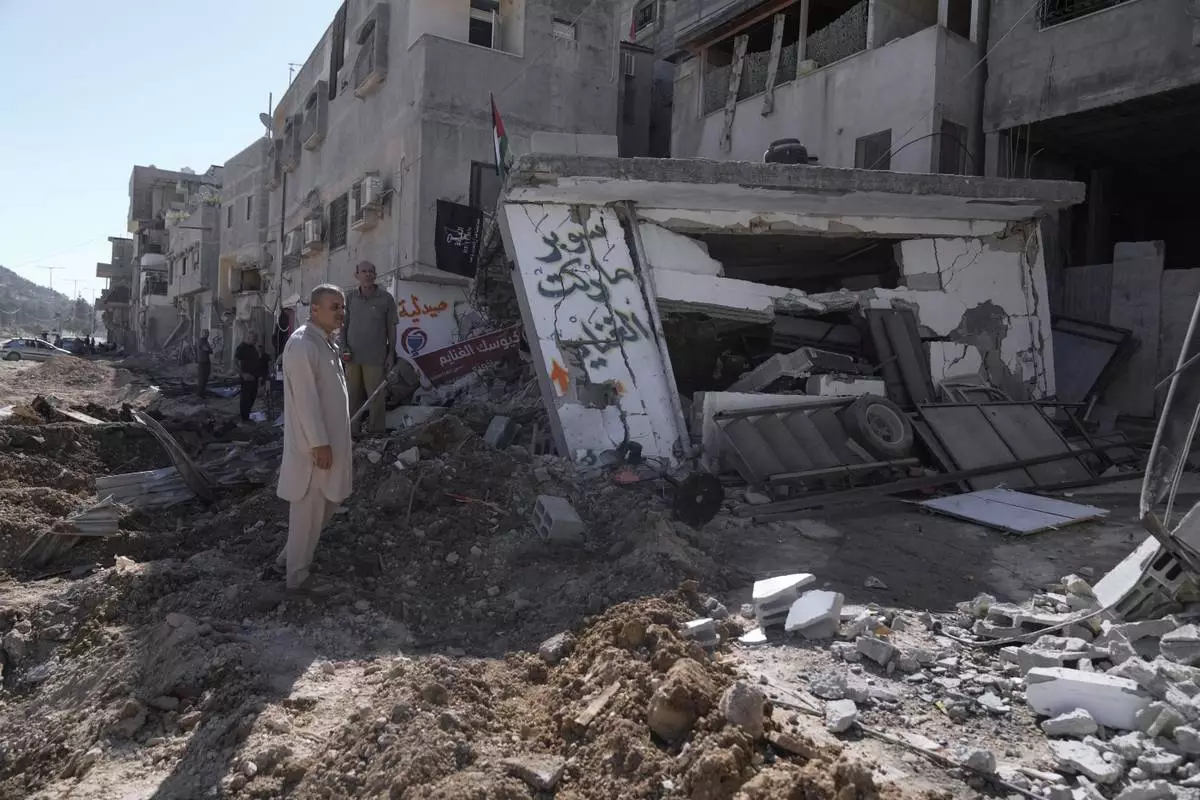
People inspect the destruction following an Israeli forces raid in Tulkarem, West Bank, on Wednesday, Sept. 11, 2024. (AP Photo/Majdi Mohammed)

Israeli security forces inspect the scene of what they say is a Palestinian ramming attack at a bus station near the West Bank Jewish settlement of Beit El, Wednesday, Sept. 11, 2024. (AP Photo/Ohad Zwigenberg)
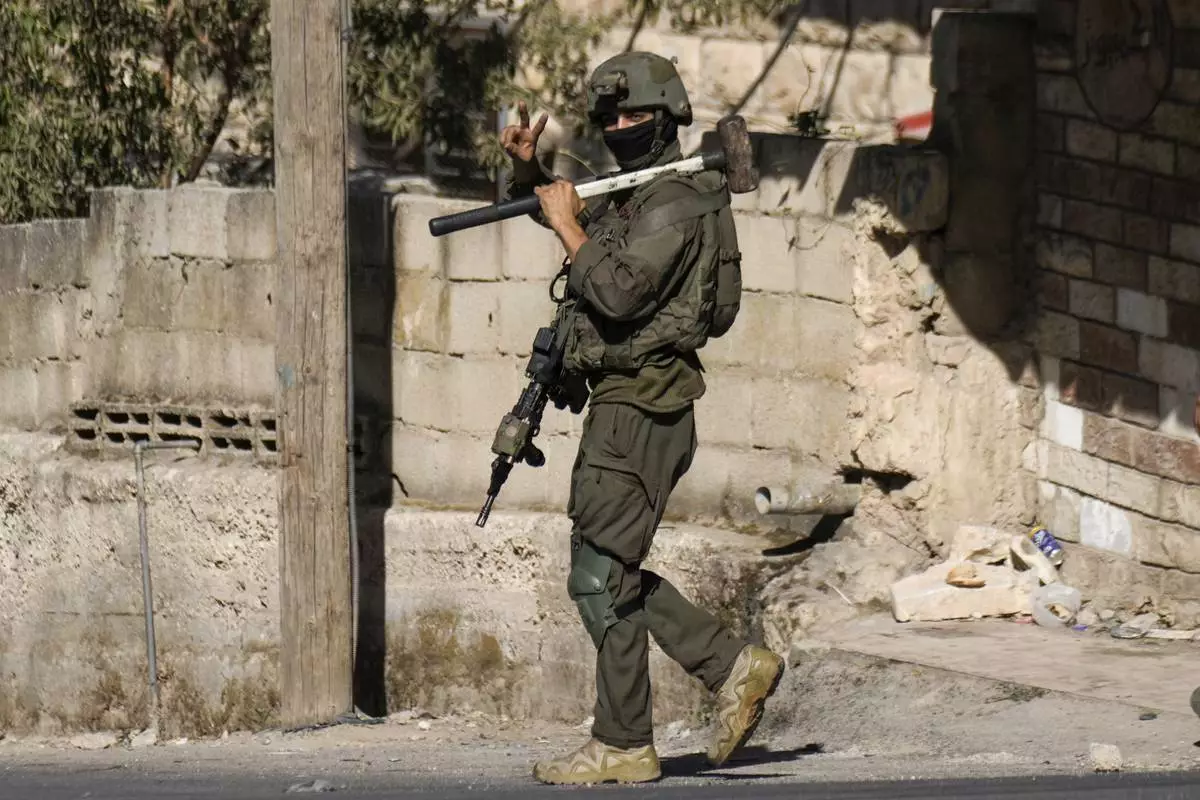
An Israeli soldier flashes a V-sign to photographers during an army raid in Tubas, West Bank, on Wednesday, Sept. 11, 2024. (AP Photo/Majdi Mohammed)
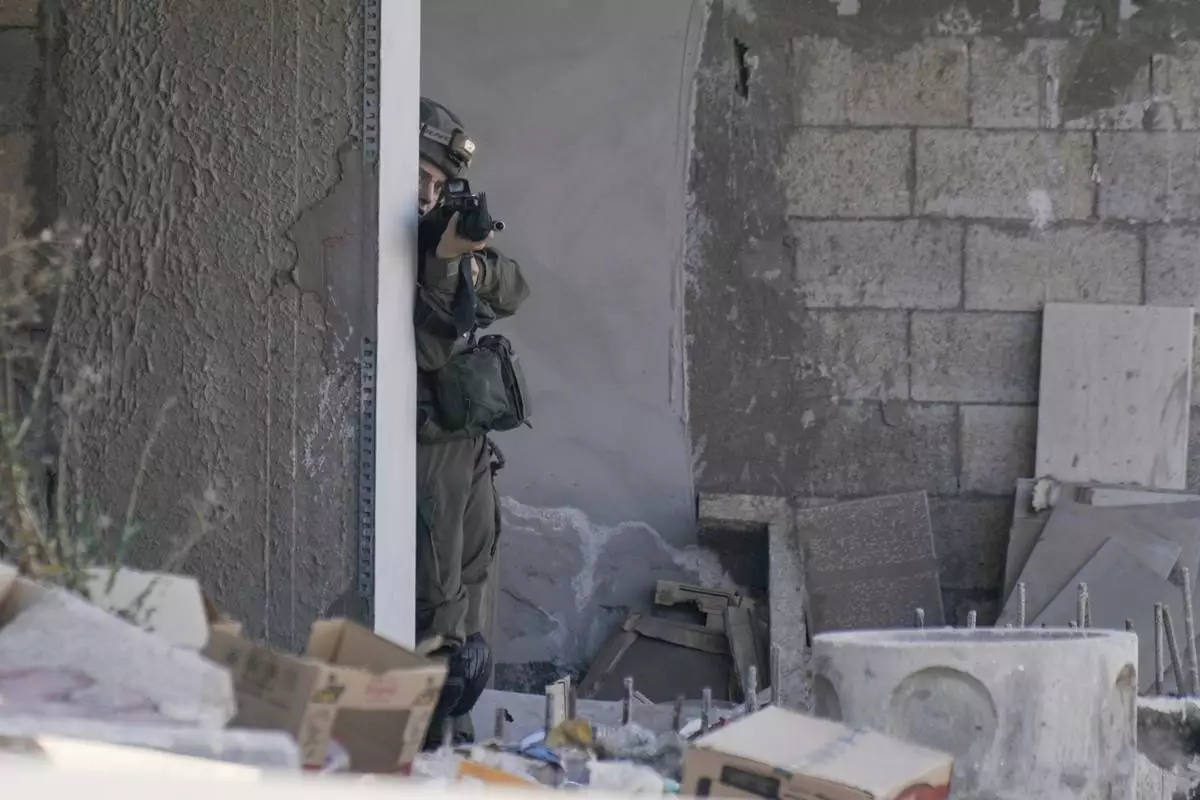
An Israeli soldier aims her rifle during an army raid in Tubas, West Bank, on Wednesday, Sept. 11, 2024. (AP Photo/Majdi Mohammed)
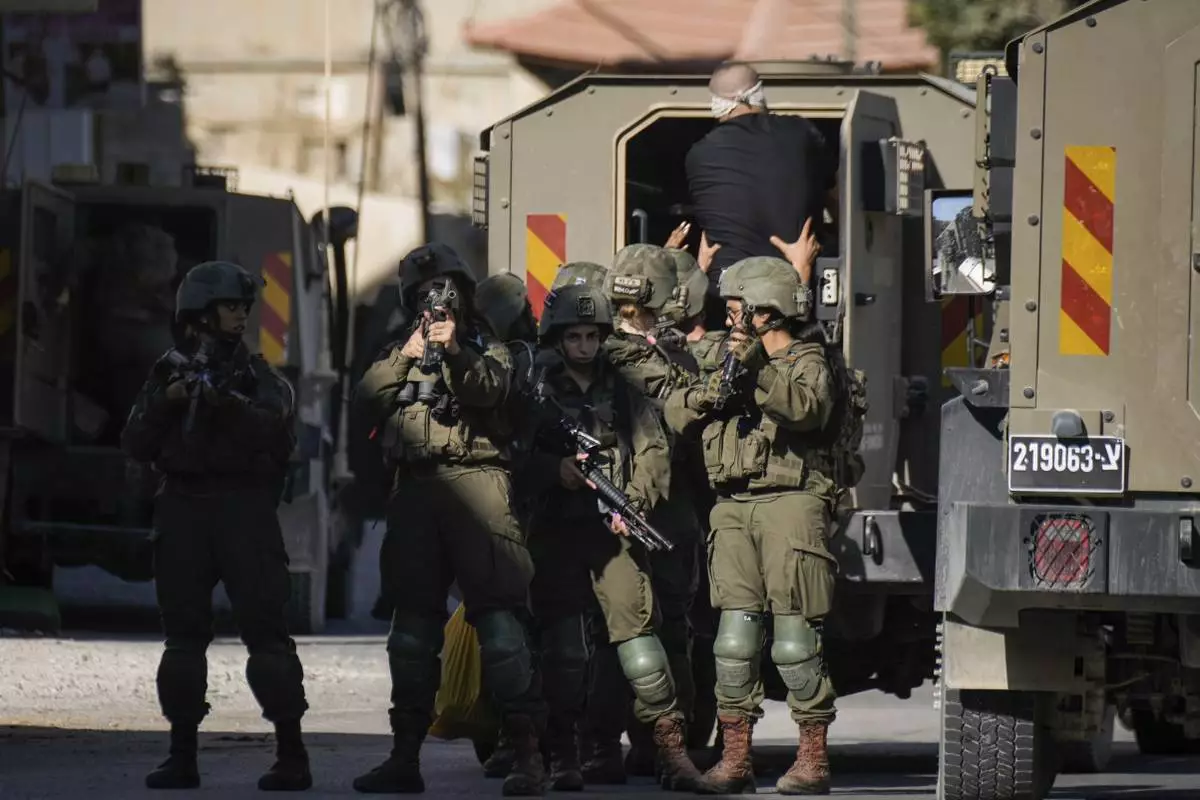
Israeli soldiers arrest a blindfolded Palestinian during an army raid in Tubas, West Bank, on Wednesday, Sept. 11, 2024. (AP Photo/Majdi Mohammed)















